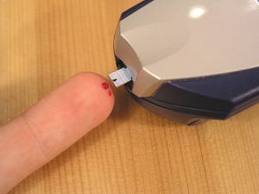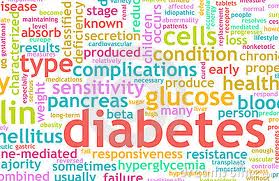Diabetes a background:
 There is no medical cure for diabetes, whether it’s Type 1 or Type 2. However, for Type 2 Diabetes there are lifestyle changes that can be made that will dramatically influence how diabetes affects your life.
There is no medical cure for diabetes, whether it’s Type 1 or Type 2. However, for Type 2 Diabetes there are lifestyle changes that can be made that will dramatically influence how diabetes affects your life.
Whilst these changes are not overly difficult to make they do require your full commitment and will power.
Let us have a look at some of these lifestyle changes in a little more depth …Remember that whilst the sacrifices may seem difficult the outcome needs to be compared with the lifetime effects of doing nothing!
1)Have a look at your diet and food choices. Elsewhere on this site you will find diets and recipes you can adopt that will have a huge bearing on the control of and management of diabetes.
2) Make a point of getting a good 30 minutes of quality exercise each day.
3)Check Your Glucose Levels
One of the benefits of modern technology is the availability of aids that can help with this. A glucose monitor
will instantly tell you whether your blood sugars are high or normal. This is incredibly important information.
Your blood sugars level tells you exactly how your body is responding to the different foods you eat, to the activities you participate in, and to any medications you are taking.
regularly checking your blood sugar levels. A big part of the problem with Diabetes is that the damage it causes is largely
unnoticable. You start feeling fine again, and even if you don’t do everything your doctor suggests, you seem to be doing better than you ever expected.You feel fine; you quit checking your blood sugar levels.
Don’t stop! Keep to your new diet, keep exercising and keep checking your blood sugar levels.
_______________________________________________________________
Diabetes, a description, symtoms and its Management
Diabetes Mellitus is one of the most costly and burdensome chronic diseases of our time and is reaching epidemic proportions around the world. The complications resulting from the diseases are a significant cause of morbidity and mortality and is also associated with the failure of various organs such as the eyes, kidneys and nerves. Diabetics are also at a significantly higher risk of coronary artery disease, peripheral vascular disease and stroke and they have a greater likelihood of suffering Hypertension Dyslipidemia.
A major cause of the disease is sedentry lifestyle, poor diet options, lack of exercise and obesity. Also there are hereditary considerations.
What is Diabetes?
Diabetes is a serious disorder of the pancreatic gland, called Madhumeha in Ayurveda. It is one of the most insidious disorders of the body’s metabolism and, if left undiagnosed and untreated, may lead to rapid emaciation and ultimately death.
What are the types of Diabetes?
According to Ayurveda Diabetes is of two types: Diabetes Mellitus- Insulin dependent Juvenile Diabetes (IDDM-Type I) in which the body is unable to produce insulin and Non Insulin Dependent Adult Onset Diabetes (NIDDM-Type II) in which the pancreas produces insulin, but it is insufficient for reducing the blood glucose to normal levels.
What are the common symptoms of Type- 1 Diabetes?
Excessive Thirst
Frequent urination
Unexplained weight loss
Irritability
Weakness
Fatigue
What are the common symptoms of Type- 2 Diabetes?
Loss off weight
Numbness in hands or feet.
Uncontrolled infections
Pain in the limbs
Inflammatory chest infections
Dimness of vision, contrast
Excessive thirst
Body weakness
What are the different tests for Diabetes?
- Urine Test: Some chemicals are added to a few drops of urine. Colour change indicates presence of glucose in urine.
- Blood Test: In this, blood is taken to test the glucose level. This is more accurate test to confirm diabetes
Which parts of my body are affected by Diabetes?
- Blood Vessels: Higher levels of glucose damage the blood vessels. As a result of this most diabetic complications occur in or are associated with our blood vessels and circulation.
- Heart: Diabetes affects the heart by: Increasing the amount of fat and increasing the amount of homocysteine in blood.
- Kidney: In diabetes because of increased levels of glucose, kidneys have to do extra work to retain essential substances and separate waste products to produce urine. This affects the small blood vessels and their capacity to filter. After many years of work, it leads to kidney failure.
- Eyes: Diabetes affects blood vessels of the eyes. Damage to these blood vessels leads to eye problems such as Damage to retina, Cataract or total loss of vision
- Feet: Damage to blood vessels reduces blood flow to the feet and increases risk of developing foot ulcers and infections.
- Nerves: High glucose level for a long time damages nerves. Nerve damage reduces sensation in some parts of body which may lead to: Numbness and tingling, Fainting and dizziness.
If you have any reason to believe you may be suffering from Diabetes please make an appointment to see a doctor or medical professional and seek a diagnosis and clarification:
How do you know if your diabetes medicines are working? get tested.
You may not find a cure but you can surely manage the awefull consequences of Diabetes and reduce the painfull and harmfull side effects that, as we have discovered, could lead to multiple organ failure and even death.
If you have been diagnosed with any form of Diabetes or simply wish to assist your natural resistance and immune system you should consider Diabetix.
Diabetix is a patented, all-natural supplement, clinically tested and proven to lower blood sugar levels in Type 2 Diabetics. Diabetix can help with pre-diabetes, Diabetes, Metabolic Syndrome, Hyperglycemia and sugar/glucose control.
Visit this link for more information on Diabetes Melitus:


